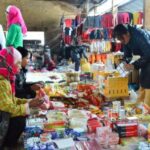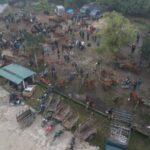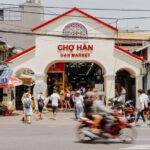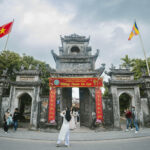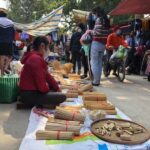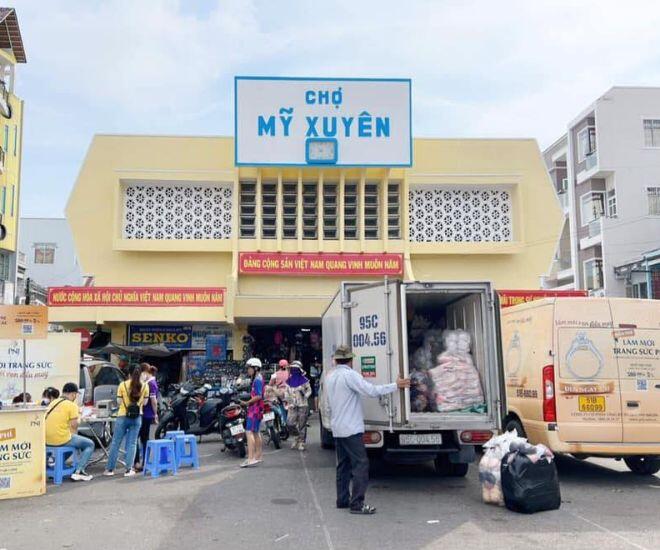
Located in Soc Trang province, My Xuyen Market is one of the oldest traditional markets in the region, boasting a historical significance that dates back to the late 19th century. According to records, the name “My Xuyen” originates from the union of two villages, Hoa My and Vinh Xuyen, officially recognized in 1893 under a decree by the Governor of Cochinchina. Since then, this market has witnessed and accompanied the urbanization and economic development of the area.
Strategically situated on Truong Vuong Street, just 3.5 km south of National Highway 1A, My Xuyen Market is a bustling hub of trade and commerce, offering convenient connections to road and waterway transport within the province. The market is divided into two main areas: an outdoor trading area with hundreds of stalls lined along a simple yet vibrant corrugated iron roof, and an indoor area for consumer goods, garments, and handicrafts. At the back of the market, a small wharf receives goods from the Ba Xuyen River every early morning, creating a unique scene that is hard to find elsewhere.
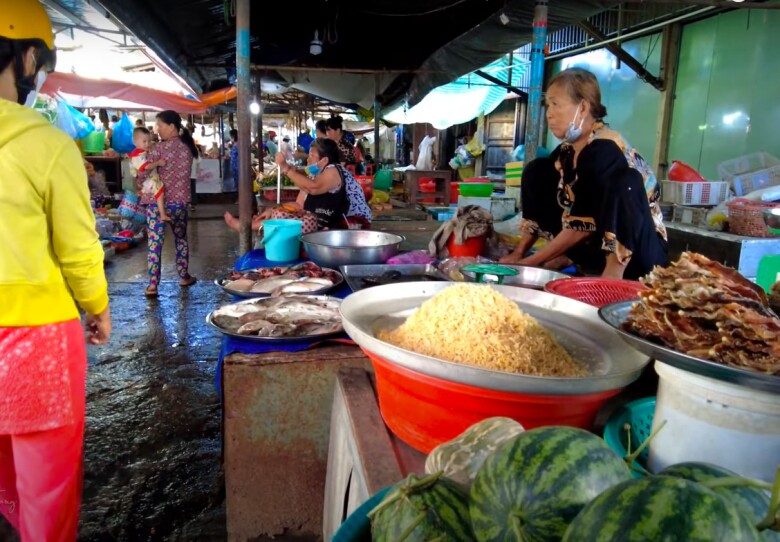
Beyond a mere trading place, My Xuyen Market serves as a rare cultural melting pot. It is home to the Kinh, Hoa, and Khmer communities, whose coexistence and trade contribute to preserving the distinctive customs and traditions of each ethnic group. This diversity is evident in the range of products, the traders’ attire, and the cuisine available throughout the market. The Kinh people’s “ao ba ba” (traditional shirt), the colorful outfits of the Khmer people, and the blended accents in the vendors’ calls create a vibrant symphony of the Western life.
Mentioning My Xuyen Market evokes a treasure trove of local specialties. Fresh seafood, including red shrimp, mudskippers, snakehead fish, apple snails, and rice field snails, is brought to the market by traders from the Ba Xuyen River at the crack of dawn. Notably, due to the thriving white-legged shrimp farming in the region, shrimp is always abundant and of superior quality. Additionally, the market boasts a wide variety of agricultural produce such as sticky corn, cucumber, water hyacinth flowers, water spinach, banana, and coconut.
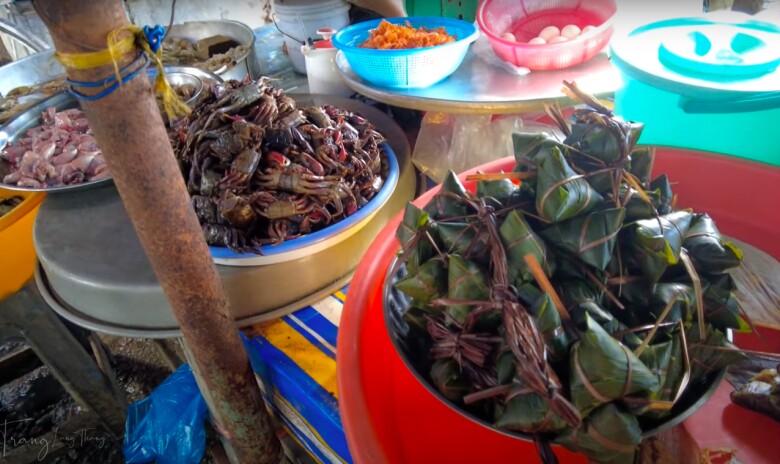
The culinary delights at My Xuyen Market are also not to be missed. In the early morning, visitors can easily find mobile eateries serving signature dishes such as bánh canh (rice noodle soup), hủ tiếu (rice noodle soup with pork and shrimp), bún cá (rice vermicelli with fish), bánh xèo (savory Vietnamese pancake), and bánh khọt (mini savory pancakes). The market also offers a variety of traditional cakes like bánh tai yến (燕餌糕, a cake with a shape resembling a swallow’s saliva), bánh bò xôi bắp (corn and mung bean cake), bánh khoai môn (taro cake), bánh củ cải (radish cake), and small bánh tét (cylindrical glutinous rice cake). The stalls selling che thap cam (mixed sweet dessert soup), sugar cane juice, and rustic yet flavorful Vietnamese coffee add to the market’s subtle charm.
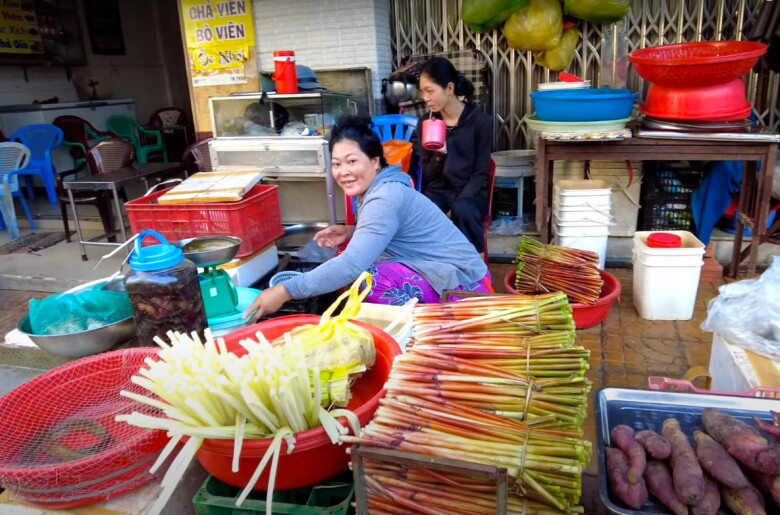
Another unique feature is the area dedicated to displaying and selling traditional handicrafts such as Tra Ong mats, woven bamboo and rattan products, conical hats, and items crafted from coconut leaves. These products not only serve the local community but also make meaningful souvenirs for visitors. In recent times, My Xuyen Market has been incorporated into community tourism tours in Soc Trang province, providing domestic and foreign tourists with opportunities to experience the region’s cultural and culinary delights.
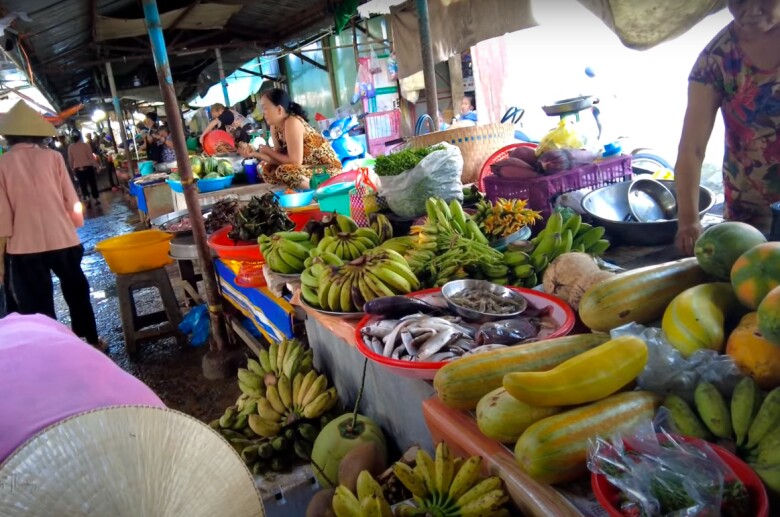
According to local tourism authorities, My Xuyen Market is often chosen as the first stop on exploration tours of My Xuyen district. After visiting the market, tourists can explore attractions such as Thien Hau Temple and My Xuyen Communal House or enjoy “don ca tai tu,” a form of folk music, at the central square. Homestays and eateries around the market are also developing to cater to the needs of visitors seeking rest and cultural exploration. Despite its growing popularity among tourists, the market retains its humble charm, with no entry fee, reasonable prices, and a friendly atmosphere for all.
The market management also prioritizes the maintenance and upgrading of facilities. Since the year 2000, significant improvements have been made to the electrical lighting, water supply and drainage systems, and environmental sanitation. During festive occasions or special fairs, the market is decorated colorfully, featuring additional food stalls, folk games, and cultural performances, creating a festive atmosphere in the small town.
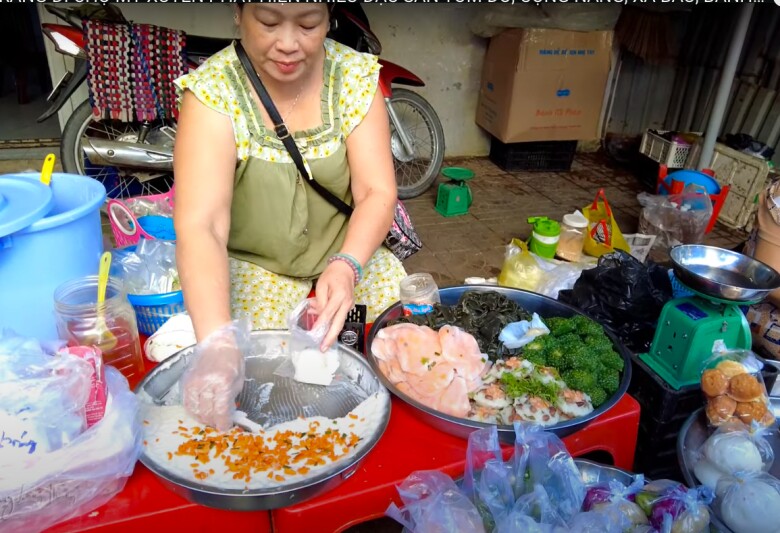
For photography enthusiasts, My Xuyen Market is a dream destination to capture vibrant moments of daily life: the soft glow of early morning stall lights, the vibrant colors of fresh produce, and the welcoming smiles of traders. These images not only possess aesthetic value but also encapsulate the cultural, historical, and lively spirit of the Western region.
To fully immerse yourself in the market’s atmosphere, it is best to visit between 5 am and 9 am, when the freshest produce is available. It is advisable to bring small denominations of cash, compare prices at different stalls, and pay attention to expiration dates and packaging for ready-to-eat items like cakes and fermented fish products.
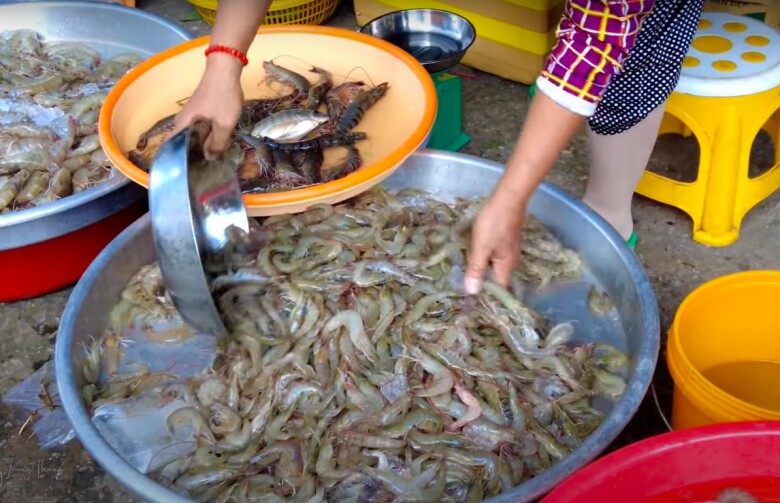
Today, My Xuyen Market is not just a source of livelihood for traders but also a repository of cultural memories and a window for younger generations to understand the origins, customs, and spirit of unity among the three ethnic communities of Kinh, Hoa, and Khmer. Amidst the urbanization and the rise of modern commercial models, preserving and promoting the traditional values of the market is commendable and worthy of continued investment and conservation.
From small cargo loads to the lively sounds of early morning trade, My Xuyen Market embodies a vibrant and proud community. It is not just a destination for visitors but also a gathering place for the soul of an entire region.
The Oldest Market in Da Nang: From a Tiny Temporary Market to a Bustling Shopping Hub in the Heart of Da Nang
For those seeking an authentic local experience, Han Market in Da Nang is a must-visit destination. This vibrant marketplace offers a vast array of goods, from fresh produce, spices, and dried goods to a diverse selection of clothing and souvenirs. But it’s not just the variety of products that makes Han Market special; it’s the unique shopping experience it offers to visitors.
The Ancient Temple: A 60km Drive from Hanoi Hides a Trove of Treasures for Holidaymakers
Over 60km from Hanoi, Chuong Temple (located in Nhan Duc village, Hien Nam ward, Hung Yen city) has been a popular spiritual tourist attraction for many years. With a rich historical background, stunning architecture, and a unique collection of ancient statues, it stands as a must-visit destination for those seeking cultural and religious experiences.
The Heart of Hanoi: A Glimpse into the Past at this Rustic Market
The Nu’a Market is a periodic gathering held in Phu Binh, a commune in the Thach That district of Hanoi. It is one of the few rural markets that have preserved the ancient cultural traditions and customs, with stalls offering a unique array of produce and goods characteristic of the rustic countryside.

























